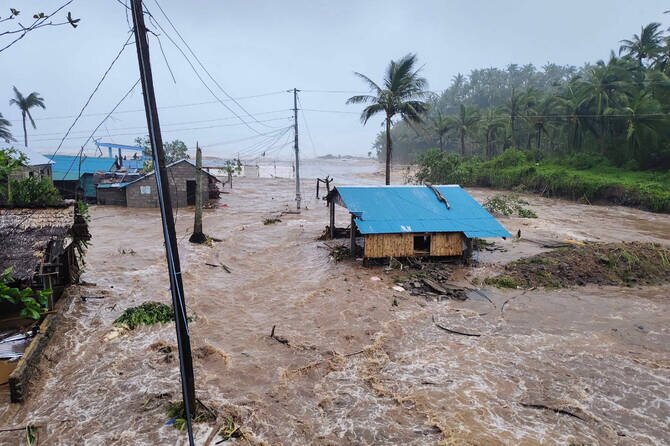
Typhoon Fung-wong Leaves Wide Swath of Destruction in Northern Philippines
Super typhoon displaces over 1.4 million people, killing at least two and causing widespread destruction across northern provinces.
MANILA: Typhoon Fung-wong has blown out of the northwestern Philippines after triggering floods, landslides, power outages, and claiming at least two lives while displacing more than 1.4 million others.
The storm is forecasted to head northwest towards Taiwan.
Fung-wong made landfall in northeastern Aurora province on Sunday night as a super typhoon with sustained winds of up to 185 kph (115 mph) and gusts up to 230 kph (143 mph).
As it traversed the region, weakening slightly, it affected mountainous provinces and agricultural plains before moving into the South China Sea.
The storm's impact included flooding that led to one drowning in Catanduanes province and another fatality in Catbalogan city when a house collapsed on her.
Over 1.4 million people sought shelter or relocated to family homes prior to landfall, with approximately 318,000 remaining in evacuation centers post-typhoon.
The storm affected 132 villages, causing damage to about 1,000 houses and leaving some residents stranded due to rising floodwaters.
Rescue, relief, and disaster response operations were underway as authorities assessed the extent of the destruction.
President Ferdinand Marcos Jr. declared a state of emergency on Thursday in anticipation of the devastation from Fung-wong following Typhoon Kalmaegi's impact.
The Philippines, known for its exposure to frequent natural disasters, has not requested international aid but has received offers of assistance from the United States and Japan.
Schools and government offices were closed, flights canceled, and ports restricted due to the severe weather conditions.
The Philippines is affected by approximately 20 typhoons and storms annually, contributing to its status as one of the world's most disaster-prone countries.
The storm is forecasted to head northwest towards Taiwan.
Fung-wong made landfall in northeastern Aurora province on Sunday night as a super typhoon with sustained winds of up to 185 kph (115 mph) and gusts up to 230 kph (143 mph).
As it traversed the region, weakening slightly, it affected mountainous provinces and agricultural plains before moving into the South China Sea.
The storm's impact included flooding that led to one drowning in Catanduanes province and another fatality in Catbalogan city when a house collapsed on her.
Over 1.4 million people sought shelter or relocated to family homes prior to landfall, with approximately 318,000 remaining in evacuation centers post-typhoon.
The storm affected 132 villages, causing damage to about 1,000 houses and leaving some residents stranded due to rising floodwaters.
Rescue, relief, and disaster response operations were underway as authorities assessed the extent of the destruction.
President Ferdinand Marcos Jr. declared a state of emergency on Thursday in anticipation of the devastation from Fung-wong following Typhoon Kalmaegi's impact.
The Philippines, known for its exposure to frequent natural disasters, has not requested international aid but has received offers of assistance from the United States and Japan.
Schools and government offices were closed, flights canceled, and ports restricted due to the severe weather conditions.
The Philippines is affected by approximately 20 typhoons and storms annually, contributing to its status as one of the world's most disaster-prone countries.